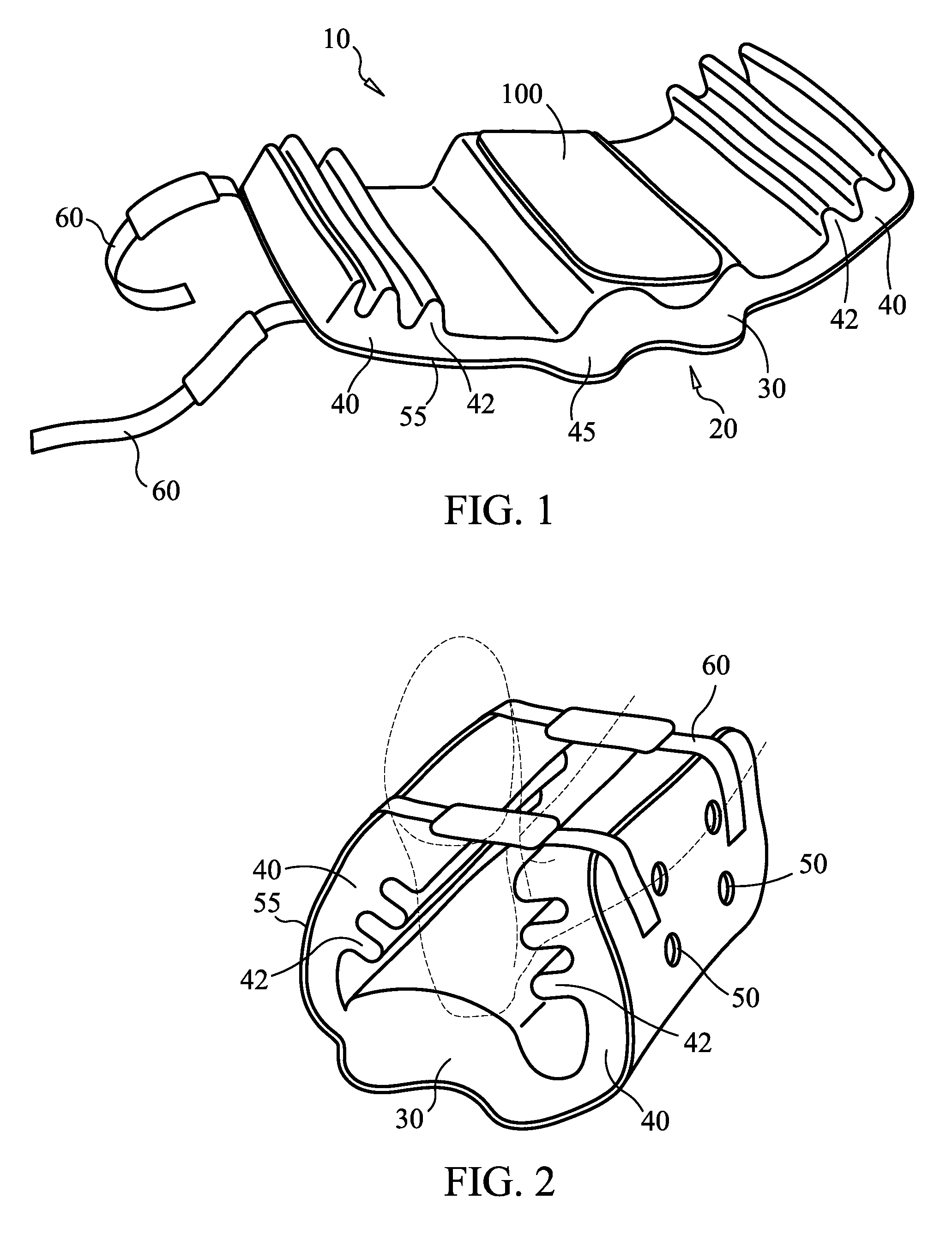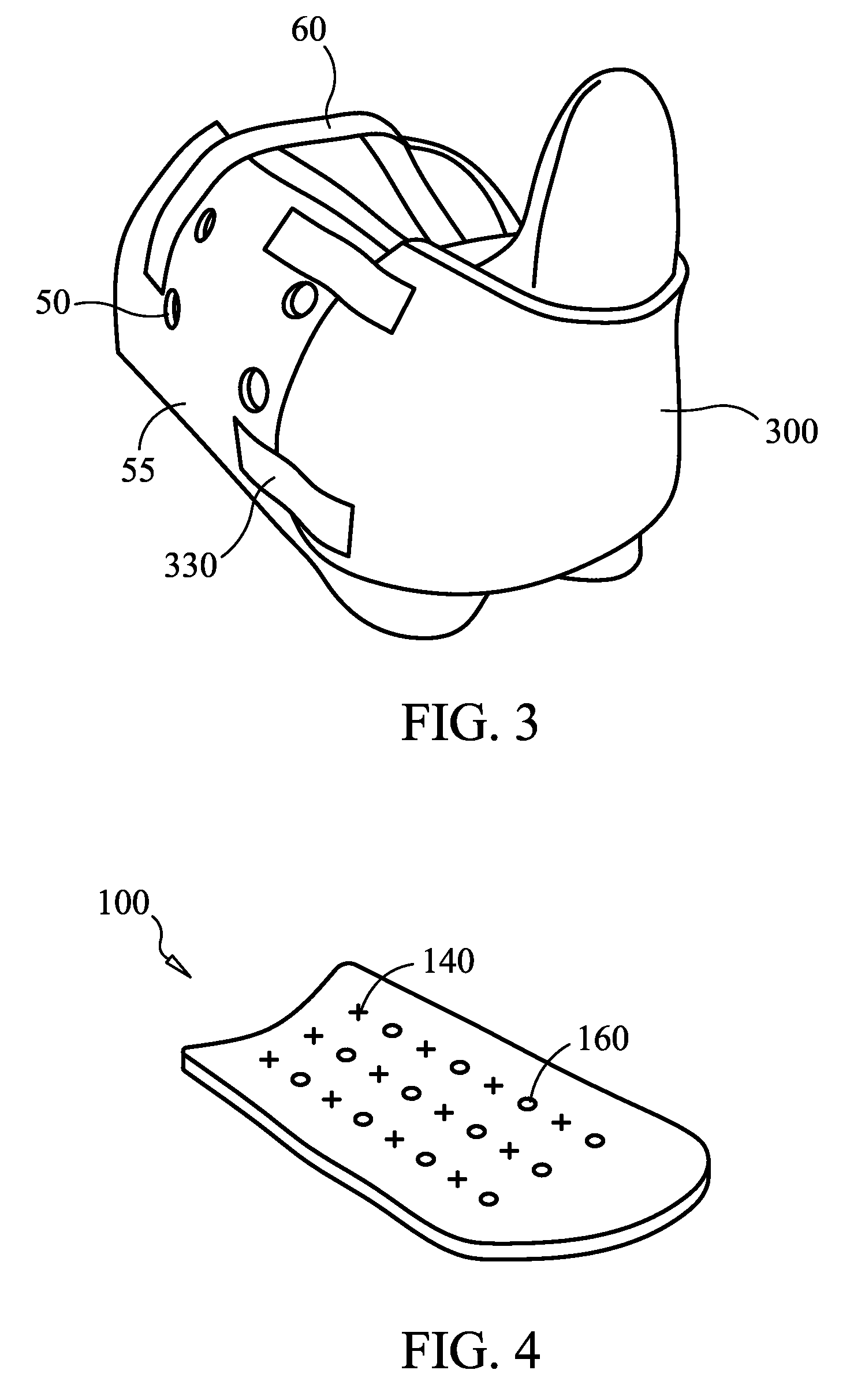It is well established that recent advances in
medicine have resulted in longer life expectancies.
In the United States, it is an accepted fact that these longer life expectancies carry with them an ever increasing cost of health care.
Skin breakdown, commonly known as bedsores,
pressure sores, or decubitus ulcers (hereinafter collectively referred to as bedsores), are ancient problems which recently have begun to reach catastrophic proportions due to the growing
population of
elderly people.
These wounds are responsible for causing extensive disabilities, pain, discomfort, and have an associated with them extensive costs of care.
Due to the ever increasing number of patients at risk for, and suffering from, bedsores, and the increased costs associated with the treatment of these sores, the need to prevent bedsores is becoming more acute.
Patients experiencing long hospital stays caused by postoperative complications,
chronic disease, or complication injuries are a risk of developing bedsores.
The main causes of bedsores are the forces of pressure, friction, and shearing.
Lymphatic drainage can also be affected by these combined forces, resulting in an accumulation of the products of breakdown from the cells'
metabolism.
When the cells' energy stores are exhausted, the cells begin to fail and normal cellular processes cease.
This progresses to
necrosis of the tissue, resulting in the formation of an ulceration and wound.
The initial external for of pressure, when combined with friction and shear, is capable of damaging the skin and causing even more severe injuries, including the development of bedsores.
For instance, when a patient is slipping down against sheets while the patient is sitting up in
bed,
static friction occurs between the skin and the sheets.
Friction has the effect of causing heat, as well as injury, and may cause the skin to abrade and cause a blister or an open break in the skin's surface.
The tissues will become damaged until the epidermis of the affected tissues ruptures, forming a crater.
Anyone who has suffered from a blister while wearing a new pair of shoes has experienced how painful and sensitive even a small blister can be.
Even a tiny break in the skin may allow
bacteria to enter and cause a painful wound to form.
Feet that tend to perspire more are subject to a higher risk of skin breakdown, and the corresponding development of bedsores, due to the
moisture on the skin.
As a result of these shearing forces, capillaries become damaged, distorted, crimped and occluded.
This leads to
ischemia (deprivation of
blood supply to an area) of tissue, which can lead to an area of dead skin, which can develop into a bedsore.
Additionally, when friction and shearing occur there is also a build up of heat, which is caused by the
rubbing irritation of the skin's surface.
The increased heat can lead to microscopic openings in the
skin surface, which allows the skin to be susceptible to infection or other irritants.
Furthermore, the introduction of liquid, such as from
perspiration or leakage of incontinence from an incontinent patient, can accelerate the formation of bedsores.
These factors contribute to the formation of skin breakdown, resulting in wound formation.
As mentioned above, these areas of the body are also susceptible to pressure wounds.
The same “at risk” population of patients mentioned above is also susceptible to the onset of contractures.
In these situations, the patient is unable to maintain the normal extension of their legs.
When a leg is bent for extended periods of time, the circulation becomes impaired, arteries and veins can become crimped and
blood flow is diminished.
If a leg is allowed to remain in a bent position, tendons, muscles, and ligaments may become contracted and shortened, resulting in the formation of a leg
contracture.
These idle periods counteract the results of the physiotherapy and other rehab measures.
Another problem encountered by
bed ridden patients is the development of contractures of the feet and lower leg.
Unsupported feet and lower extremities may develop flexion and
atrophy of the muscles.
This can result in the patient not being able to maintain normal body alignment or being able to flex their feet to an upward position, a condition referred to as “
foot drop” or foot destabilization.
However, as the foot may flex downward, pressure develops between the foot and the device maintaining the foot in the flexed position.
This pressure can lead to further occurrence of bedsores.
 Login to View More
Login to View More  Login to View More
Login to View More 


